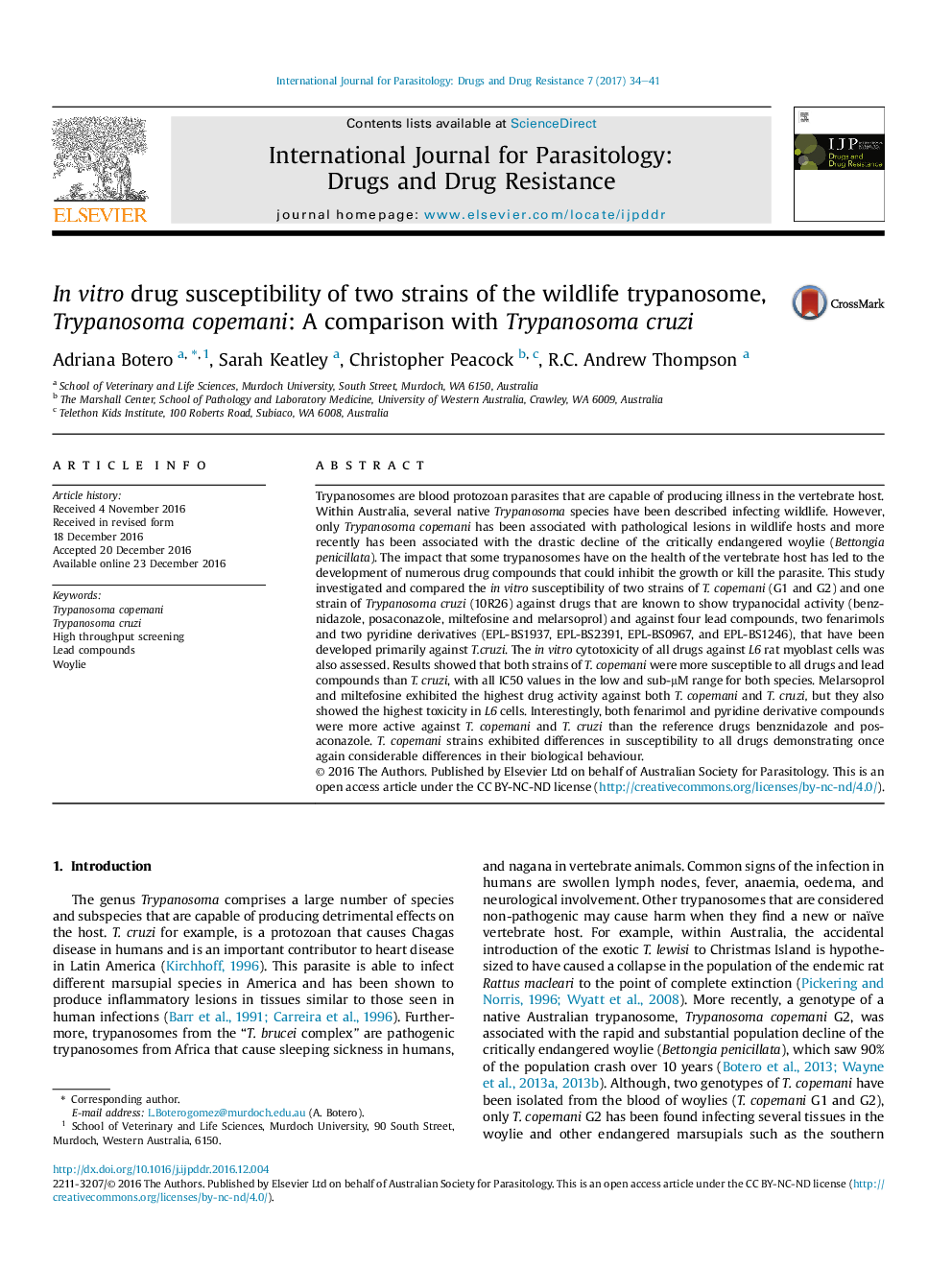| Article ID | Journal | Published Year | Pages | File Type |
|---|---|---|---|---|
| 5517875 | International Journal for Parasitology: Drugs and Drug Resistance | 2017 | 8 Pages |
Trypanosomes are blood protozoan parasites that are capable of producing illness in the vertebrate host. Within Australia, several native Trypanosoma species have been described infecting wildlife. However, only Trypanosoma copemani has been associated with pathological lesions in wildlife hosts and more recently has been associated with the drastic decline of the critically endangered woylie (Bettongia penicillata). The impact that some trypanosomes have on the health of the vertebrate host has led to the development of numerous drug compounds that could inhibit the growth or kill the parasite. This study investigated and compared the in vitro susceptibility of two strains of T. copemani (G1 and G2) and one strain of Trypanosoma cruzi (10R26) against drugs that are known to show trypanocidal activity (benznidazole, posaconazole, miltefosine and melarsoprol) and against four lead compounds, two fenarimols and two pyridine derivatives (EPL-BS1937, EPL-BS2391, EPL-BS0967, and EPL-BS1246), that have been developed primarily against T.cruzi. The in vitro cytotoxicity of all drugs against L6 rat myoblast cells was also assessed. Results showed that both strains of T. copemani were more susceptible to all drugs and lead compounds than T. cruzi, with all IC50 values in the low and sub-μM range for both species. Melarsoprol and miltefosine exhibited the highest drug activity against both T. copemani and T. cruzi, but they also showed the highest toxicity in L6 cells. Interestingly, both fenarimol and pyridine derivative compounds were more active against T. copemani and T. cruzi than the reference drugs benznidazole and posaconazole. T. copemani strains exhibited differences in susceptibility to all drugs demonstrating once again considerable differences in their biological behaviour.
Graphical abstractDownload high-res image (267KB)Download full-size image
